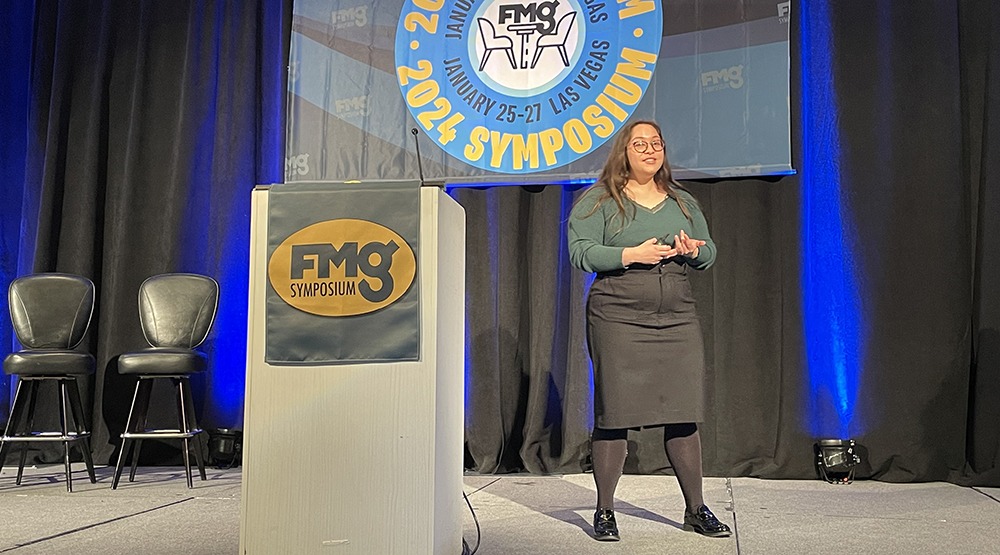LAS VEGAS — While a good portion of retail sales in 2024 might resemble 2023, a Wells Fargo economist told attendees at Furniture Marketing Group’s 2024 Symposium at the Horseshoe Las Vegas that signs say clouds could be lifting.
Nicole Cervi, a Charlotte, N.C.-based economist, outlined the state of the economy today, what led it to where it is and what to expect this year and beyond. She said while some metrics are still a little elevated, it appears things are improving.
“We think the tightening cycle is over. The Fed hasn’t hiked interest rates in their last three meetings. Even though inflation is double their goal, employment has softened,” Cervi said. “The Fed doesn’t want to put rates so high that they cause a recession. Look for them to hold into summer and then cut.
“Economic growth will not be strong because you have a restrictive economic policy. That’s going to keep a thumb on the lid in terms of expansion. We’re looking for short term rates to fall by end of the year and the yield curve to be essentially flat at 3.5% by 2025.”
Cervi noted that the Fed’s rate hikes, which began in March 2022, were some of the most aggressive since the 1980s. Why? “The Fed has a dual mandate: the first is to maintain low and stable prices across the economy, and most would consider stable to be around 2% inflation,” she said. “The other is maximum employment. We want unemployment low and employment growth to be strong.”
There are still some concerning signs. Cervi said that, during COVID, excess liquidity built up and some remains, but most of it resides with the top 50%. She said the bottom of the spectrum has largely depleted those savings. Additionally, revolving consumer credit is well above $1 trillion, and the average interest rate on that credit exceeds 20%. However, household debt to disposable income is in line with 2019.
“Even though we’ve seen growth in credit card debt, it’s come with strong wage growth, so it’s not overly vulnerable,” she said.
Housing is in an odd position as well. Many would-be homebuyers are choosing to stay in their existing homes due to the difference in their current mortgage’s interest rates vs. today’s rates. Inventory is low enough to keep upward pressure on prices, as new home sales ended 2023 up. Also, apartment construction is at rates not seen since the 1970s.
Cervi said a tighter credit market coupled with the state of the housing market isn’t exactly a recipe for robust sales in the furniture category.
“We look for durable goods spending to contract this year modestly. What’s going to keep consumption going is services,” she said. “We don’t see strong consumption in the durable goods space. There’s going to be some stickiness there. Mobility is lower. Look for sales to be slower.”
